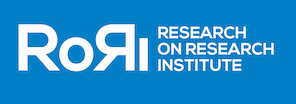Self and Social: An Interview About Autoethnography

We are considering research and careers, and in that context we have the opportunity to hear from scholars who use their research in unique and important ways. We are also looking at new options for researchers in the COVID era, given the difficulties involved with accessing participants and sites. To gain insight on both of these questions, Janet Salmons, the methods guru at our sister site MethodSpace, interviewed Peter J. Gloviczki about his use of autoethnographic methods. This post originally appeared at MethodSpace.
Gloviczki works as an associate professor of communication at Coker University in Hartsville, South Carolina. His first scholarly book is Journalism and Memorialization in the Age of Social Media (Palgrave Macmillan, 2015). His journal articles have appeared in Qualitative Inquiry, Journal of Loss and Trauma, The Qualitative Report and elsewhere.
Please briefly define autoethnography for those who are not familiar with this research method.

I would define autoethnography as research writing about the intersection between self and social. This definition is greatly influenced by the path setting work of Deborah Reed-Danahay.
Furthermore, my understanding of autoethnography as a field is due in large part to the excellent research completed by Carolyn Ellis and Art Bochner. I am fortunate to now count Carolyn and Art among my mentors. Ellis, Bochner and others have championed the method, drawing broadly on influences from communication, sociology, history, anthropology and other disciplines.
What ethical issues are present in autoethnographic studies?
Like in all forms of writing-based research inquiry, autoethnographers must be mindful of the ethical relationship between personal and cultural matters in an evolving world. Recognizing that every autoethnographic account must include elements of both self and other, I would say an autoethnographer tries to be as reflexive as possible about what is known, how it is known and what is unknown or unknowable. For example, Art Bochner has written extensively on the value of embracing doubt. As part of the interpretive, narrative paradigm in communication, In my work, I am inspired by the ideas of autoethnographers like Christine S. Davis and Carol Rambo, who have written eloquently about the power of story, as well as about the notion that the best stories are sometimes unfinished or incomplete entities.
What skills do autoethnographic researchers need?
Three characteristics come to mind. First, an autoethnographer must be a good listener, who is ready to make sense of and bring meaning to the world and its particulars. Second, an autoethnographer must also be a careful analyst who is willing to grapple with the challenges of the emotional arena. For example, excellent autoethnographies have emerged from, among other topics, moments of loss and trauma. Third, an autoethnographer benefits from being a careful writer, a person who is precise, detailed and even evocative, in presenting experiences on paper.
What steps are involved with autoethnographic studies?
An autoethnography usually begins with some specific data. That data include: media accounts; popular culture artifacts; material elements from the natural or technological world; photographs; oral histories; a set of fieldnotes or other record keeping; or it could even begin with a series of personal memories, in which the autoethnographer is careful to admit what is remembered and also to admit what has been forgotten or lost to history. The more rich the data, the easier it is to construct autoethnographic work. I like to begin autoethnography with the data and let the work unfold inductively. It tends to lead to the most meaningful research. I begin with questions such as: what stories are the data telling? Why are they telling those stories?
Then, I work to understand the data in spatial, temporal and cultural terms. What is known about the space, time and cultural context in which the data occurred? Autoethnography is both challenging and rewarding because it leans so heavily into lived experience. Analysis requires a great deal of spatial, temporal and cultural reflection.
Why have you chosen autoethnography?
I’ve chosen autoethnography as a methodological lens because it allows me to more fully research the changing communication environment. I grew up with early communication platforms, including Telnet, Internet Relay Chat and early forms of social media. I found that these early interactional spaces came to influence how I thought of myself as a person and eventually how I thought of the work I do as a teacher and a scholar. I also wanted (and want) to make sense of the physical body in an increasingly virtual everyday life. I was born with Cerebral Palsy, a physical disability, and online I never felt that physical limitation. In personal and cultural contexts where I have experienced some physical limitations, I have often sought necessary adaptations to make those worlds more accessible to me. The work of autoethnography is for me in many ways a giving of thanks for all the discoveries that I’ve made about adaptability and the interpersonal relationships I have benefitted from, while also living in recognition of the work that I have yet to accomplish. Much like autoethnography itself, the work I do autoethnographically is fluid and evolving.

How do you design your autoethnographic studies?
I firmly adhere to autoethnographer Laurel Richardson’s notion of writing as research process, and I allow the design of autoethnographic work to emerge as the writing itself emerges.
Accordingly, I begin with a commitment to write the data as best and most evocative as I can. My design seeks to ground autoethnography in known lived experience.
What kinds of data do you collect or record, and how do you analyze it?
Concrete entities work best as data: conversations can be recorded, media accounts can be stored or transcribed, visual or aural culture that be documented. The strongest autoethnographic data allow audiences to enter the lived experiences of the authors and their respective cultures. An autoethnographer analyzes data by analyzing its meanings. This process usually begins with textual analysis and can include recollection sharing with others as well as mining the personal and cultural emotional past(s) associated with the data.
Are others involved in any stage, do you ever work collaboratively?
Others can often be involved in autoethnographic work. For example, I’ve been fortunate to collaborate on two autoethnographic publications with my students in the last five years. In each of these published collaborations, my students were the lead authors and I simply helped them complete their work. Whenever I’ve been fortunate to work with co-authors, more generally, their insights help me see things in new and novel ways. I am collaborating on a few autoethnographies in progress at the moment and it is great to see others’ lived experiences in the narrative storytelling. Collaboration serves to make richer both the process and the product.
I’ve seen some of your publications, which are quite short. Describe your publication strategy and rationale.
I’m fascinated with autoethnographic brevity, especially in our age of micro social media platforms, including Twitter and TikTok.
Accordingly, one branch of my autoethnographic research has sought to place the most information rich narratives into the tightest spatial and temporal boundaries. Essentially, I am working to communicate as much as possible amidst tight boundaries.
Many researchers’ data collection has been disrupted by the pandemic. For example, researchers planning to interview participants find they can’t access the sites or people. How might researchers use autoethnography to study the experience of this unique time?
COVID-19 continues to reshape so many aspects of everyday life. In this cultural moment, I would encourage those individuals interested in learning more about autoethnography to read some of the best autoethnographers writing today. To the autoethnographers mentioned above, I would add scholars such as: Robin Boylorn, Tony E. Adams, Barbara J. Jago, Rose Richards, Julie-Ann Scott Pollock, Norman K.
Denzin, Stacy Holman Jones, Jasmine Ulmer, among many others, are some of the writers whose work most stimulates my own work. I have found the community of autoethnographers (some I have met in person, others I know only from their work) to be incredibly supportive. I am grateful for their guidance. Autoethnography has taught me that the self is always social and the social is always influenced by the self.
During COVID 19, there seems to be value in making sense of the peculiar times by working to unpack the personal and cultural forces we meet in our everyday shelter-in-place experiences.
How might researchers use autoethnography in conjunction with other methods?
Autoethnography pairs well with other methods that employ the interpretive, reflective tradition in communication research. These might include textual analysis, content analysis, interview methodology, the case study research strategy, participant observation, personal experience methods, among others.
Autoethnography allows the opportunity to carefully consider the factors at work in the human experience. Combining it with these methods, or other relevant methods, provides a good way to deepen the research writing.
For those who wish further reading on the topic, I can recommend two (open access) options: An overview and bibliography by Reed-Danahay and an excellent overview article by Ellis, Adams & Bochner
As an example of my work, I’m including a link to an autoethnography (open access or PDF) that I wrote as an invited essay at the beginning of the COVID-19 pandemic: or Longing-for-a-Familiar-Way-of-Going-ForwardDownload




























































































